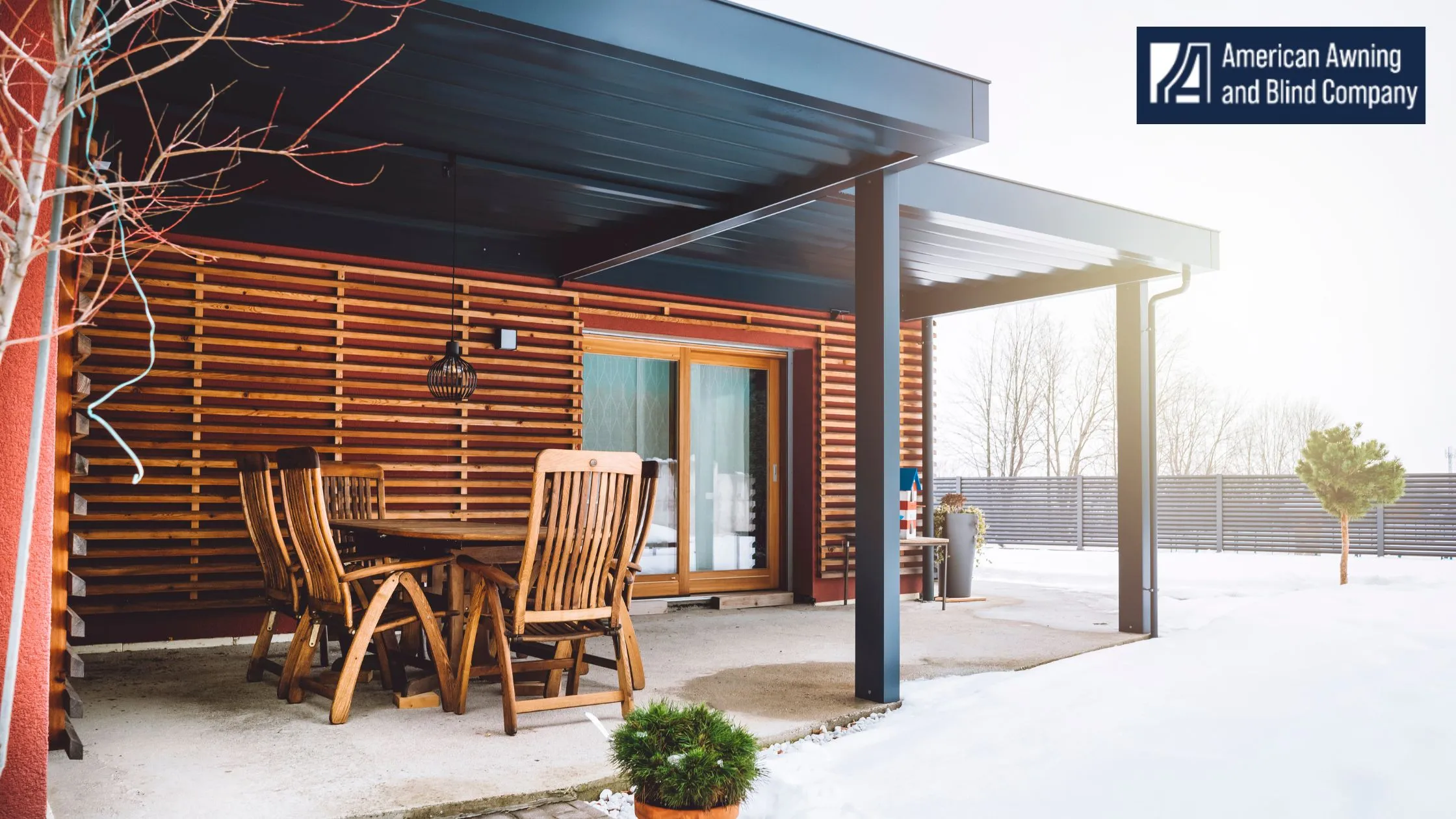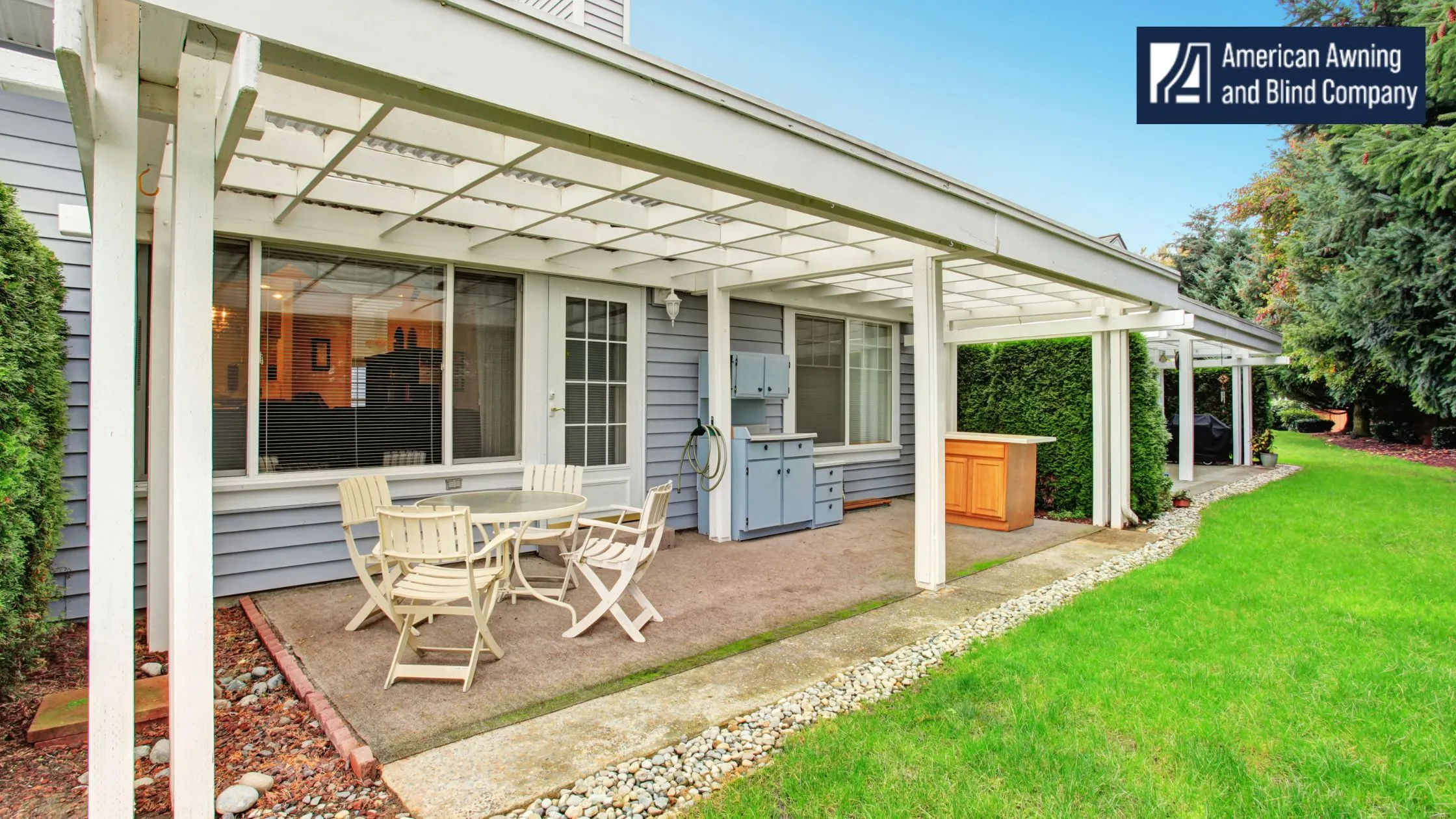A patio cover is a great way to extend your living space outdoors, providing shelter and protection from the elements. When it comes to protecting your patio from rain, the choice of material is crucial to ensure durability, effectiveness, and aesthetic appeal. This article will explore various patio cover materials, discussing their benefits, drawbacks, and how to choose the best one for your needs.
Understanding Your Needs
Before diving into the specifics of patio cover materials, it’s essential to assess your needs and preferences. Consider factors such as:
Climate: How much rainfall does your area receive? Is it heavy, light, or intermittent?
Patio Usage: Will you use the patio for dining, relaxation, or entertaining?
Budget: What is your budget for the patio cover?
Aesthetic Preferences: What style and appearance do you prefer for your outdoor space?
By answering these questions, you can better understand which material will best suit your needs.
Popular Patio Cover Materials
Here’s an overview of popular patio cover materials for rain protection:
Aluminum

Benefits:
Durability: Aluminum is resistant to rust and corrosion, making it ideal for areas with high humidity or heavy rain.
Low Maintenance: It requires minimal upkeep compared to other materials.
Versatility: Available in various styles and colors, aluminum can complement different architectural styles.
Drawbacks:
Heat Retention: Aluminum can become hot under direct sunlight, which might be uncomfortable if your patio is exposed to the sun for long periods.
Cost: High-quality aluminum covers can be relatively expensive.
Best For: Those seeking a low-maintenance, durable, and versatile option that can withstand heavy rain.
Polycarbonate
Benefits:
Transparency: Polycarbonate sheets are available in clear or tinted options, allowing natural light to pass through while providing rain protection.
Strength: It is highly durable and can withstand impact and extreme weather conditions.
UV Protection: Many polycarbonate sheets are treated to block UV rays, protecting your patio furniture and skin from harmful sun exposure.
Drawbacks:
Cost: Polycarbonate can be more expensive than some other materials.
Scratch Prone: The surface can scratch easily, which may affect its appearance over time.
Best For Those who want a transparent cover that lets in natural light while providing robust rain protection.
Wood
Benefits:
Aesthetic Appeal: Wood offers a classic and natural look, enhancing the visual appeal of your outdoor space.
Versatility: Can be customized to match your home’s style and design preferences.
Drawbacks:
Maintenance: Wood requires regular maintenance to prevent decay, rot, and insect damage.
Cost: High-quality wood and maintenance can be costly.
Best For: Those seeking a traditional, customizable option and are willing to invest in regular upkeep.
Vinyl

Benefits:
Durability: Vinyl is resistant to rust, corrosion, and weathering, making it a good option for rain protection.
Low Maintenance: It does not require painting or staining and is easy to clean.
Drawbacks:
Appearance: Some people find vinyl less aesthetically pleasing compared to natural materials like wood.
Temperature Sensitivity: Vinyl can become brittle in frigid temperatures.
Best For Those who want a low-maintenance, durable cover that can withstand various weather conditions.
Fabric
Benefits:
Flexibility: Fabric covers can be retractable, allowing you to adjust the amount of coverage based on weather conditions.
Variety: Available in numerous colors and patterns to match your patio decor.
Drawbacks:
Durability: Fabric can wear out over time, especially with exposure to harsh weather conditions.
Maintenance: It requires regular cleaning and may need to be replaced periodically.
Best For Those who prefer a versatile and customizable option and are willing to perform routine maintenance.
Pergolas with Retractable Canopies
Benefits:
Adjustable Coverage: A pergola with a retractable canopy allows you to control the amount of coverage based on the weather.
Aesthetic Flexibility: Pergolas can be designed in various styles, and retractable canopies can add an extra layer of rain protection when needed.
Drawbacks:
Complexity: Installation can be more complex compared to more straightforward covers.
Cost: This option can be more expensive due to its dual functionality and design.
Best For: Those seeking a stylish and flexible solution with the option to adjust coverage.
Considerations for Choosing the Best Material
When selecting the best patio cover material for rain protection, consider the following factors:
Weather Conditions
Choose a material that can handle the typical weather conditions in your area. For heavy rainfall, opt for materials that offer robust waterproofing and durability.
Maintenance
Evaluate how much time and effort you are willing to invest in maintaining your patio cover. Materials like aluminum and vinyl require less maintenance compared to wood or fabric.
Aesthetic Appeal
Select a material that complements the design of your home and outdoor space. Consider how the patio cover will fit with your existing landscaping and architecture.
Budget
Determine your budget and find a material that offers the best balance of durability, maintenance, and aesthetic appeal within your price range.
Installation
Consider the complexity of the installation process and whether you need professional help. Some materials and designs may require more intricate installation compared to others.
Additional Tips for Rain Protection
Proper Drainage
Ensure that your patio cover has an adequate drainage system to prevent water from pooling on the surface. This can help extend the lifespan of your cover and keep your patio area dry.
Regular Inspection
Periodically inspect your patio cover for any signs of damage or wear. Addressing minor issues promptly can prevent more significant problems and ensure adequate rain protection.
Consider Gutter Systems
Installing gutters along the edges of your patio cover can help direct rainwater away from your patio and prevent damage to your home’s foundation.
Conclusion
Choosing the best patio cover material for rain protection involves evaluating your needs, considering various material options, and factoring in weather conditions, maintenance, aesthetics, and budget. Each material has its unique benefits and drawbacks, so it’s essential to select one that aligns with your preferences and requirements. By making an informed choice, you can enjoy a functional, stylish, and rain-resistant patio cover that enhances your outdoor living space. For personalized advice and professional assistance, you can contact American Awning and Blind Company.
FAQs
What factors should I consider when choosing a patio cover material?
When selecting a patio cover material, consider the following factors:
- Climate: Choose a material that can handle your area’s typical weather conditions, especially if you experience heavy rainfall.
- Patio Usage: Consider how you plan to use the patio. Different materials offer varying levels of comfort and protection.
- Budget: Determine your budget to find a material that offers the best balance of durability and cost.
- Aesthetic Preferences: Select a material that complements your home’s style and enhances your outdoor space.
- Maintenance: Evaluate how much upkeep you’re willing to perform on the patio cover.
What are the best materials for heavy rain protection?
For heavy rain protection, the best materials include:
- Aluminum: Highly durable and resistant to rust and corrosion, making it ideal for heavy rain.
- Polycarbonate: Offers excellent durability and impact resistance, with options for UV protection.
- Vinyl: Resistant to rust and corrosion and generally requires low maintenance.
How does a polycarbonate patio cover compare to an aluminum one?
Polycarbonate patio covers offer transparency, allowing natural light to pass through while providing strong rain protection. They are highly durable and impact-resistant but can be more expensive and scratch-prone. Aluminum covers, on the other hand, are very durable, resistant to rust, and low maintenance, but can become hot under direct sunlight. Both options provide excellent rain protection, but your choice may depend on whether you prefer a transparent or opaque cover.
What are the maintenance requirements for different patio cover materials?
- Aluminum: Requires minimal maintenance; occasional cleaning to remove dirt and debris.
- Polycarbonate: Needs regular cleaning to prevent scratches and maintain clarity; check for impact damage.
- Wood: Requires regular maintenance, including staining or painting, to prevent decay, rot, and insect damage.
- Vinyl: Low maintenance; clean periodically to remove dirt and avoid discoloration.
- Fabric: Needs regular cleaning and may need replacement over time due to wear and tear.
Can fabric patio cover withstand heavy rain?
Fabric patio covers can offer some rain protection but may be less durable and practical than other materials in heavy rain. They are more suitable for areas with light to moderate rainfall and may require regular maintenance and eventual replacement due to exposure to harsh weather conditions.
Are pergolas with retractable canopies a good choice for rain protection?
Pergolas with retractable canopies provide adjustable coverage, allowing you to adapt to changing weather conditions. They can offer good rain protection when the canopy is deployed, but the installation can be complex, and the cost can be higher. This option is best for those who want flexibility and are willing to invest in a more sophisticated solution.
How important is proper drainage for patio covers?
Proper drainage is crucial for maintaining the longevity and effectiveness of your patio cover. Ensuring that your patio cover has an adequate drainage system helps prevent water from pooling, which can lead to damage and reduce the cover’s lifespan. Installing gutters and ensuring the cover is adequately pitched can help manage rainwater effectively.
What should I look for during regular inspections of my patio cover?
During regular inspections, look for signs of damage, such as cracks, leaks, rust, or wear. Check for any blockages in drainage systems and ensure that the cover is securely attached and functioning as intended. Addressing minor issues promptly can prevent more significant problems and ensure continued rain protection.
Can I install a patio cover myself, or should I hire a professional?
The complexity of the installation can vary depending on the material and design of the patio cover. Simple covers like fabric or bare aluminum may be manageable for DIY installation, while more complex structures like pergolas with retractable canopies often require professional installation. Consider your skill level and the complexity of the project when deciding whether to tackle the installation yourself or hire a professional.
How can I enhance the effectiveness of my patio cover for rain protection?
To enhance the effectiveness of your patio cover:
- Ensure proper installation and drainage.
- Perform regular maintenance and inspections.
- Consider additional features like gutters to direct rainwater away from your patio.
- Choose a durable and weather-resistant material suited to your climate and usage needs.
